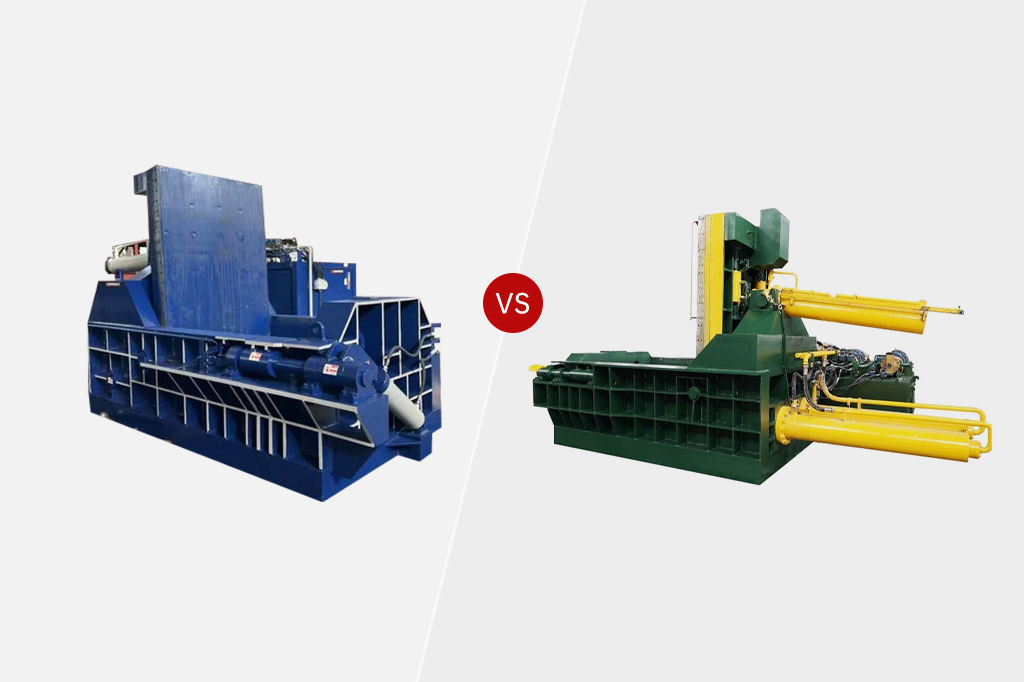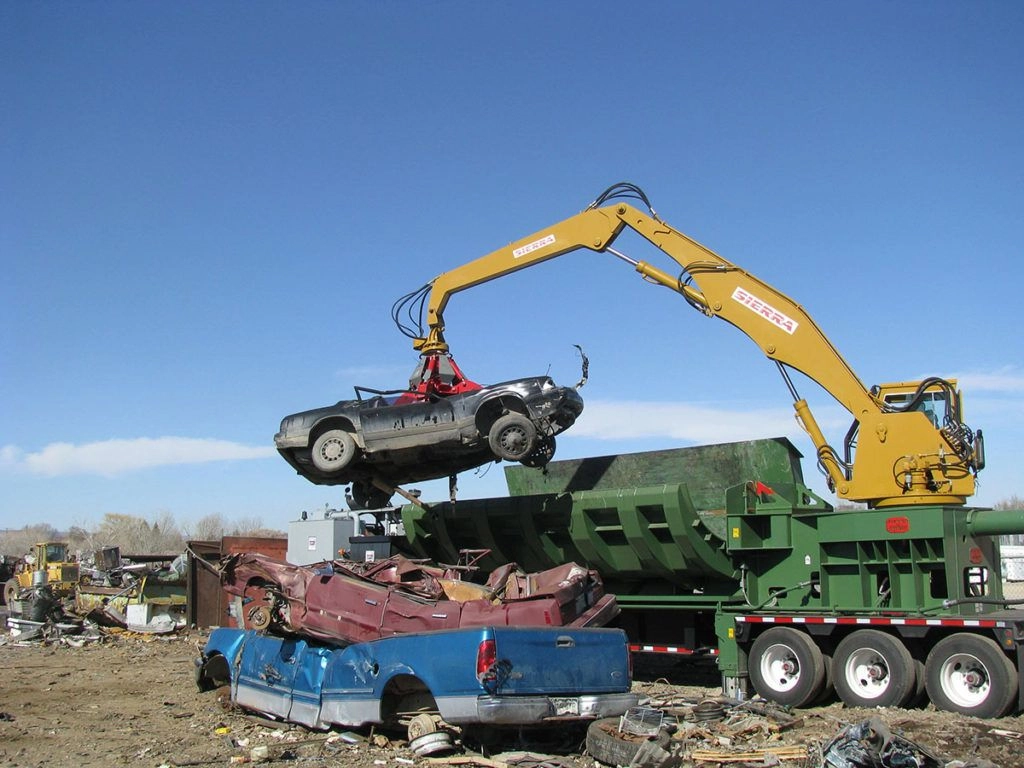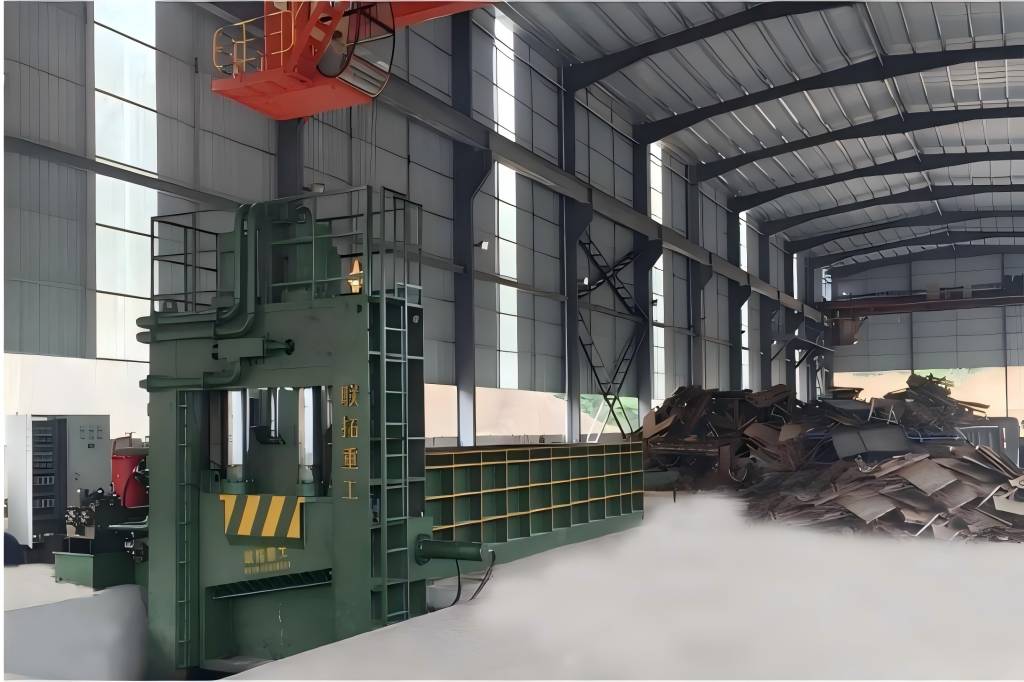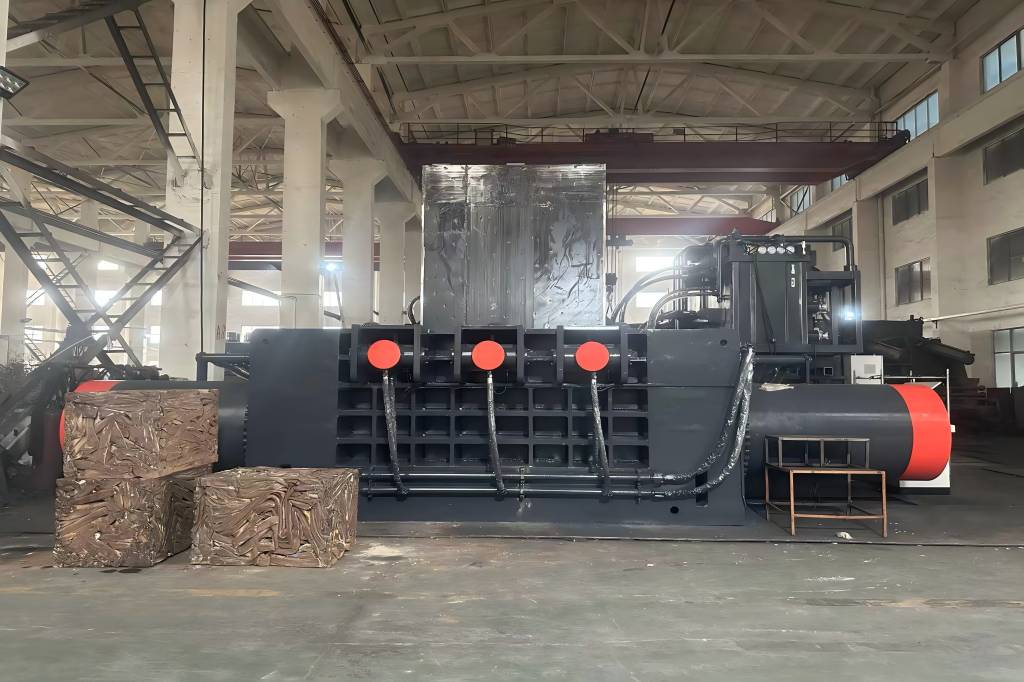In the growing recycling industry, efficiently processing scrap metal is crucial for productivity and profitability. A key machine in this process is the scrap metal baler, which compresses scrap metal into manageable bales.
When choosing a baler, businesses must decide between manual and automatic models, each offering distinct advantages based on size, scale, and needs. This article examines the advantages and disadvantages of each option to assist you in selecting the best one for your business.
What is a Scrap Metal Baler?
A baler is a machine used to compress loose scrap metal—whether it’s aluminum, steel, copper, or other materials—into compact, uniform bales. Because these bales are simpler to handle, move, and store, less room is needed to handle big scrap loads.
The main difference between manual and automatic balers lies in how much human labor is involved in the process, and how efficiently the machine can operate at varying volumes.
Manual Scrap Metal Balers
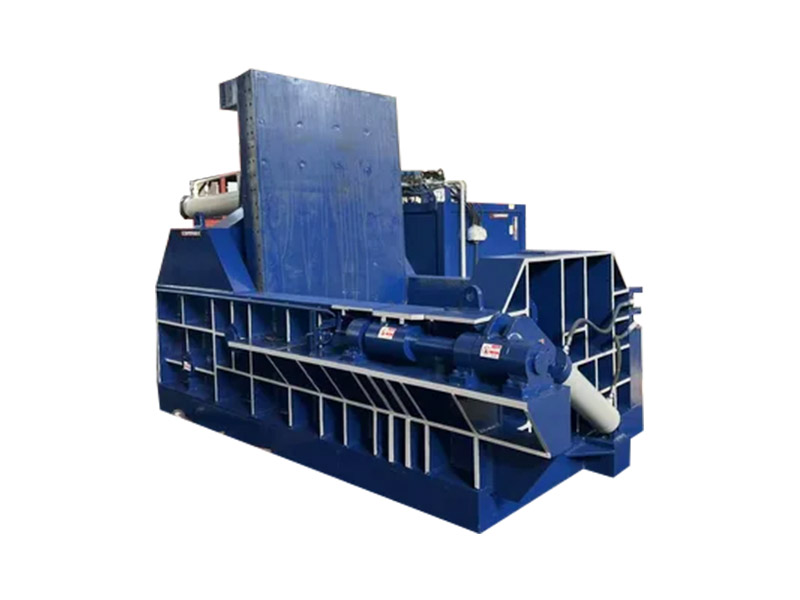
Manual balers are the traditional type of baler and have been widely used in scrap metal recycling for years. These machines are operated by human labor, with the operator performing most of the tasks: loading the metal, activating the compression process, tying the bale, and unloading it.
While this may seem labor-intensive, manual balers are still commonly chosen for their affordability and flexibility.
Advantages of Manual Scrap Metal Balers
- Lower Initial Investment: Compared to their automatic equivalents, manual balers are usually less expensive, which makes them a great option for smaller companies with little funding or low scrap metal production volumes.
- Simplicity of Operation: With fewer components and simpler controls, manual balers are easy to operate and require minimal training. Operators can quickly learn the process, making them suitable for businesses with less experienced workers.
- Flexibility in Material Handling: Manual balers allow operators to adjust and adapt easily when dealing with different types and sizes of scrap metal. Since human involvement is required at each stage, the machine can be quickly adjusted to process diverse materials.
- Reduced Maintenance Costs: Due to the fewer moving parts in manual balers, they generally require less maintenance than automatic models. They are therefore an affordable choice in terms of maintenance.
Disadvantages of Manual Scrap Metal Balers
- Labor-Intensive: The need for a human operator at every stage of the baling process means manual balers require more labor. This can increase operating costs and reduce efficiency, especially for businesses that handle larger volumes of scrap.
- Lower Productivity: Manual balers typically have a slower throughput compared to automatic models. The speed at which the operator can load, compress, and remove bales is dependent on their skill and the type of scrap being processed.
- Limited Scalability: As your business grows and the volume of scrap metal increases, a manual baler may no longer be able to meet your processing needs. Scaling up the operation would require additional labor, which could lead to inefficiencies.
Automatic Scrap Metal Balers
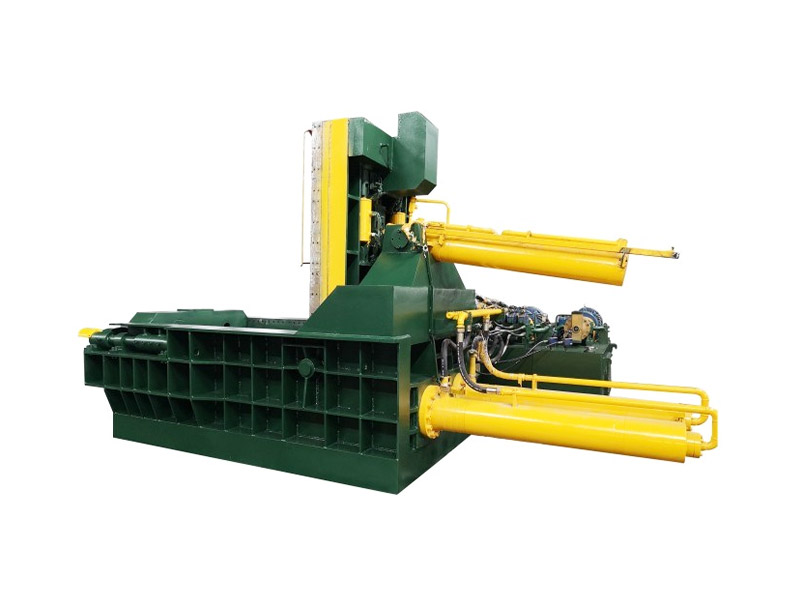
Automatic balers are designed to handle high volumes of scrap metal with minimal human intervention.
These machines are equipped with advanced technology, such as conveyors, automated bale ejection, and computer-controlled processes, allowing them to operate quickly and efficiently with little manual input. Automatic balers are ideal for larger businesses or those with high throughput needs.
Advantages of Automatic Scrap Metal Balers
- Higher Throughput and Efficiency: Automatic balers are faster and more efficient than manual balers, processing scrap metal with minimal human involvement. They are capable of producing more bales in less time, making them ideal for high-volume operations.
- Reduced Labor Costs: Automatic balers require less labor to operate. Once the system is set up, operators only need to monitor the machine, resulting in significant savings in labor costs.
- Consistent Bale Quality: Automatic balers produce uniform, high-density bales consistently. Since the process is automated, human error is minimized, leading to better quality control and more consistent output, which is important for resale or further processing.
- Advanced Features for Efficiency and Safety: Many automatic balers are equipped with advanced features such as automated bale tying, real-time monitoring, and automatic shut-off in case of a malfunction. These characteristics lower the chance of accidents and enhance operational safety.
- Scalability for Growing Operations: As businesses expand, the need for faster processing and higher volumes of material increases. Automatic balers can scale easily without needing a proportional increase in labor or equipment.
Disadvantages of Automatic Scrap Metal Balers
- Greater Initial Cost: Because of their sophisticated technology and automated procedures, automatic balers have a higher initial cost. Because of this, they may be out of reach for startups or small enterprises with little funding.
- Complex Maintenance: Because automatic balers are more complicated, they could need more specialist upkeep and repairs. While they often come with warranties, these services can be costly over time.
- Higher Energy Consumption: Automatic balers consume more energy than manual models due to their advanced motors and continuous operation. This can increase the overall operating costs, especially for businesses running their balers around the clock.
Comparison Table: Manual vs. Automatic Scrap Metal Baler
| Feature | Manual Scrap Metal Baler | Automatic Scrap Metal Baler |
| Initial Cost | Reduced initial outlay of funds | Greater initial outlay of funds |
| Labor Requirements | High, operator involvement in each step | Low, minimal operator input |
| Efficiency | Lower throughput, slower process | High throughput, faster processing |
| Flexibility | Flexible, can handle various materials | Less flexible, optimized for specific material types |
| Maintenance Costs | Lower, fewer components | Higher, more complex systems require specialized care |
| Bale Consistency | Variable, dependent on operator | Consistent, automated process ensures uniformity |
| Energy Consumption | Lower energy use | Higher energy use due to automated systems |
| Scalability | Limited, requires more labor for increased volume | High scalability, handles growing volume without extra labor |
| Safety Features | Basic safety, operator manually handles the process | Advanced safety features, automated shutdown systems |
| Best For | Small to medium businesses with lower volume needs | Large-scale operations with high-volume processing needs |
Which Baler Is Right for Your Business?
Choosing the right scrap metal baler depends on factors like your business size, budget, labor availability, and scrap volume. Here are some key considerations to help you decide:
- Size of Your Operation: Small businesses with lower scrap volumes benefit from manual balers due to their affordability and simplicity. Large operations handling significant scrap volumes will find automatic balers more efficient and cost-effective over time.
- Budget: Manual balers are more affordable upfront, but automatic balers offer faster processing, reduced labor costs, and higher operational efficiency, making them a better investment for long-term growth.
- Labor Availability: If labor is expensive or hard to find, automatic balers reduce workforce requirements, offering a more sustainable solution. However, if you have a reliable workforce, a manual baler may be sufficient.
- Volume of Scrap Metal: Automatic balers are ideal for high-output operations, offering a better return on investment with large volumes. Manual balers, though cost-effective, may struggle to keep up with increased demand.
Conclusion
Choosing between a manual and automatic scrap metal baler depends on your business needs. Manual balers suit smaller businesses with limited budgets and lower volumes, offering flexibility and low maintenance. Automatic balers, ideal for high-throughput operations, provide greater efficiency, lower labor costs, and consistency, making them a good investment for scaling businesses.

